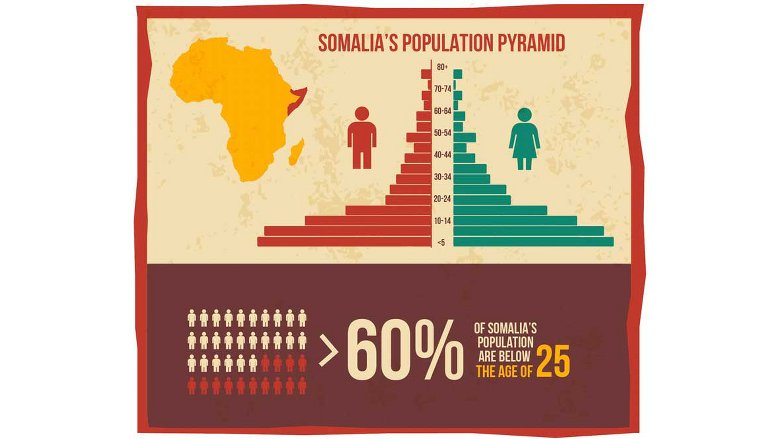The creative or ‘Orange’ economy, as this employment is more commonly referred to, if nurtured, can offer great opportunities to women and youth. “Working as a creative in Somalia is a risk because you don’t get consistent work,” says Mukhtar. “You are always looking for the next opportunity because you can lose it all. Job security isn’t there.”
Creative and cultural activities have brought humanity joy, understanding, cross-cultural communication, and innovation for millennia. However, their economic potential in the Global South is still not leveraged. The World Bank Group’s Solutions for Youth Employment report titled Orange Economy: As a Driver of Jobs for Youth describes the Orange Economy as “a range of economic activities in cultural and creative industries where the main objective is the production or reproduction, promotion, distribution, or commercialization of goods, services, and activities of content derived from cultural, artistic, or heritage origins”, and estimates that it generates approximately 30 million jobs a year with a US$ 2.3 billion revenue a year.
On May 28, Somalia launched the National Youth Development Initiative, with newly elected President Hassan Sheikh Mohamud in attendance. The President reiterated the Initiative’s focus on bolstering job creation for youth and encouraged Somali youth’s involvement in the future development of the nation. Somalia’s youth are key to economic recovery but face high poverty rates, a developing education system, and limited employment opportunities.
Somalia, known as the ‘The Nation of Poets’, has deeply embedded cultural art forms and oral traditions. Prior to the civil war, Somalia had a vibrant legacy of the arts, from popular music bands and theatre plays, that now lives on in a new generation of young Somalis globally. “We need people in government that understand what [young people and women] need and not just what they think we need. They can engage creative professionals in Somalia to teach, train, and guide the next generation,” suggests Mukhtar. In this way, the government can support creative self-employment and training.
The Solutions 4 Youth Employment Report indicates four areas in which governments can support young people and women in the creative and cultural industries:
- Promoting human capital through training, mentorship, occupation specific skills training, and apprenticeship opportunities.
- Providing access to finance in the form of grants, microfinancing or by developing partnerships with institutions in the East Africa region, such as the British Council’s East Africa Arts program or Kenya-based HEVA Fund.
- Facilitating access to regional and international markets through commercial agreements, building brands, and marketing products of entrepreneurs beyond Somalia.
- Building networks and community hubs to support and build resilience for self-employed individuals.
Promoting the creative and cultural industries in Somalia can help to address unemployment, enhance social cohesion, and light a new way forward for the youth and women. The road to a more prosperous future requires the minds of Somali women and youth at home, and those in the diaspora, who are ready to bring their ideas and strengths together. Currently, over 60% of the Somali population live on less than $2 a day and to ensure greater equity, diverse ideas and solutions are needed that cater to different groups of the population. The Orange Economy provides an opportunity to revive Somalia’s strong cultural traditions, which can be leveraged to provide employment opportunities, and help restore the social fabric, as Mukhtar highlights, “I didn’t speak Somali when I moved to Somalia, but photography helped me connect with the people around me.”


